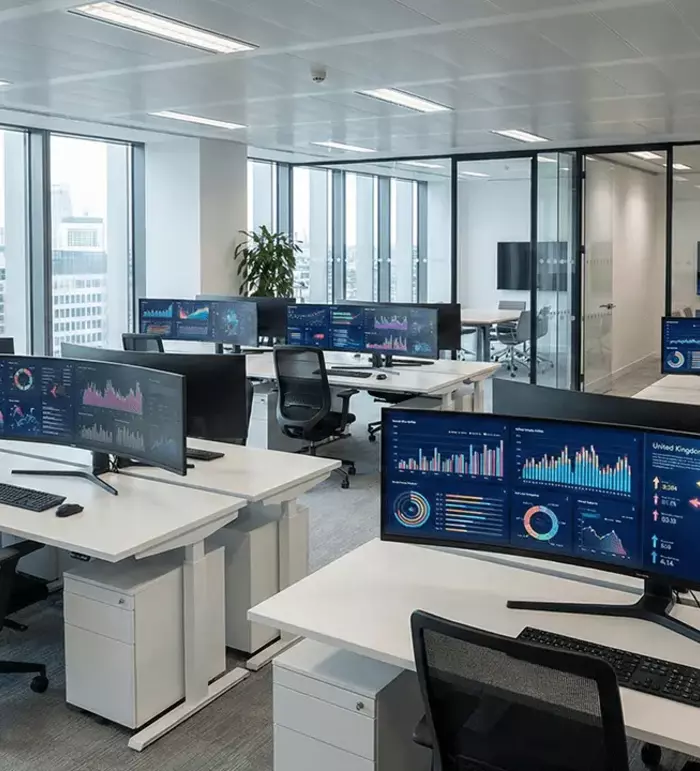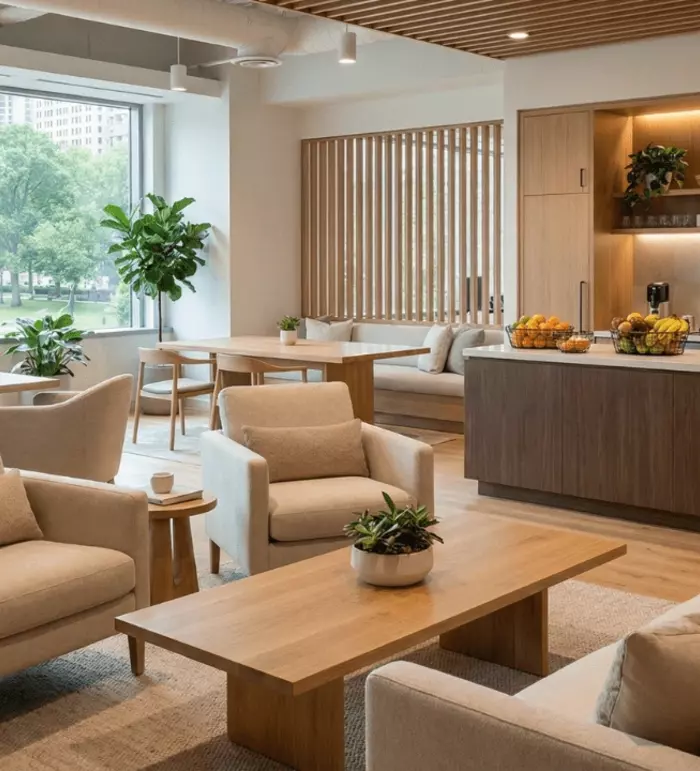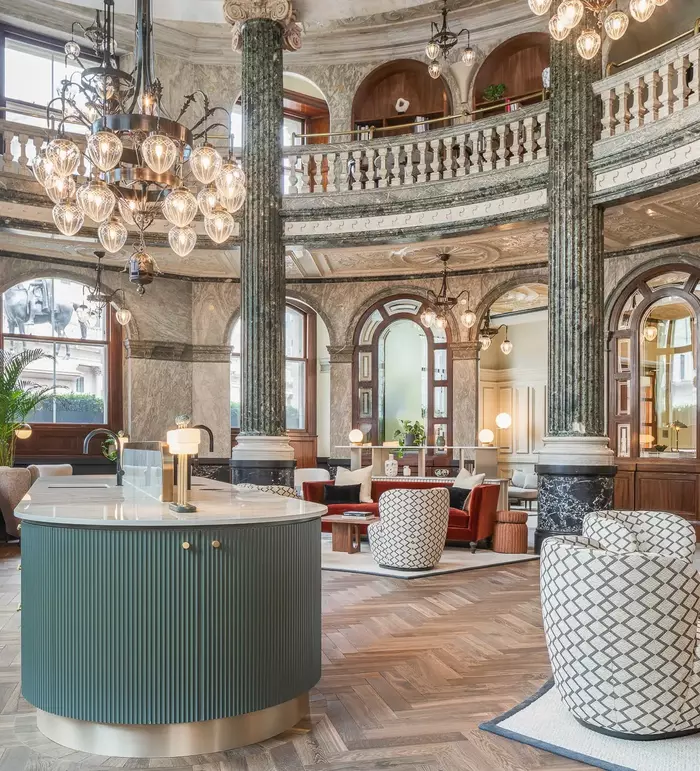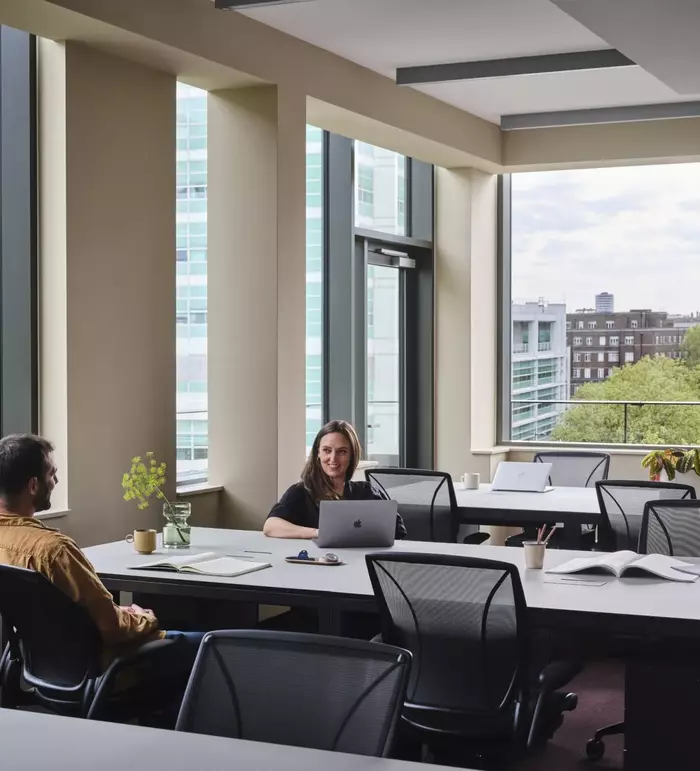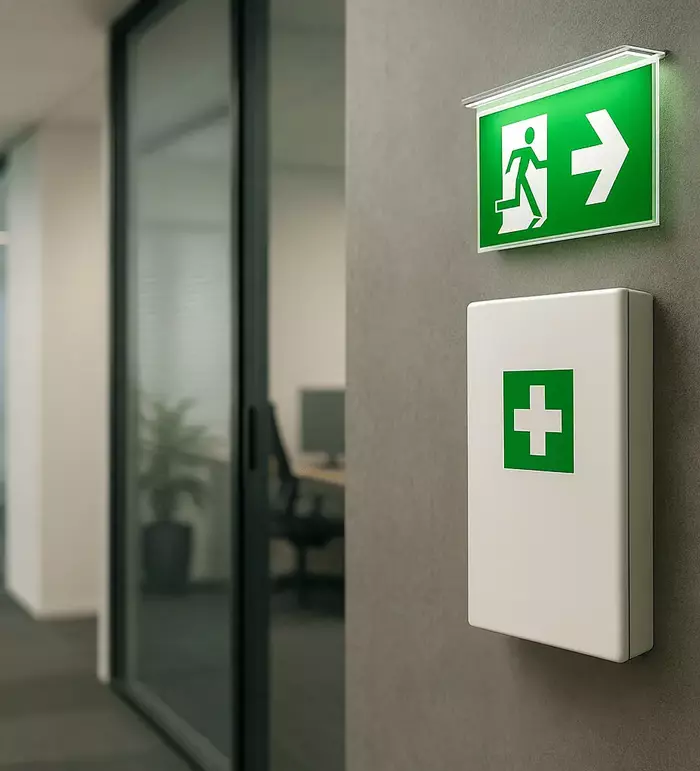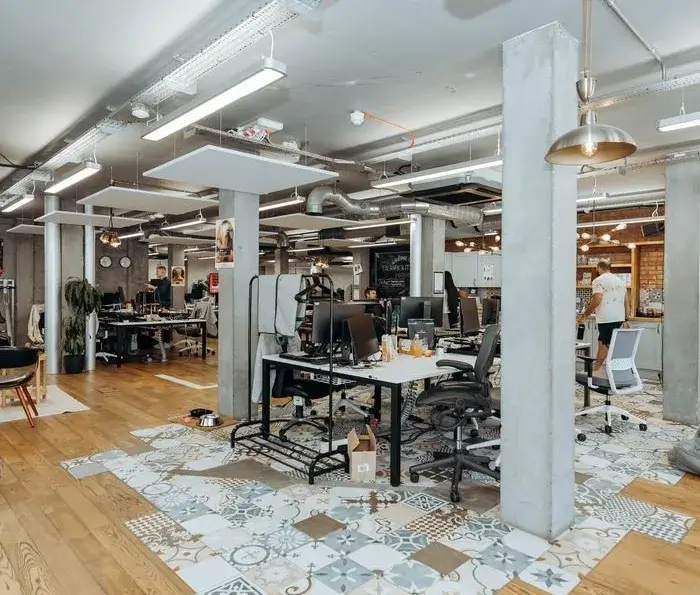If you've ever typed "best office space in London" or "how much office space do I need?" into Google, you're not alone. Finding the right office isn't just about desks and chairs anymore. It's about flexibility, wellbeing, cost-efficiency, and future proofing. But with so many options out there, and so many buzzwords being thrown around, it’s easy to feel overwhelmed.
What kind of space will actually help your team thrive? What lease terms are secretly waiting to trip you up? What does ‘hybrid-friendly’ even mean in real life?
In this guide, we’re pulling back the curtain. You’ll learn how to spot a smart deal, avoid expensive mistakes, and create a workspace your team will love showing up to. Whether you’re a startup outgrowing your coworking pod or a scale-up with serious growth plans, this one’s for you.
In This Article:
Lease Like a Pro: What to Know Before You Sign
Office leases can be riddled with fine print and industry jargon. It’s easy to get lost in the language, and even easier to overlook clauses that could cost you big later on. From hidden fees to sneaky exit terms, you need to go in with your eyes wide open.
The stakes are high. A poorly negotiated lease can lock you into an inflexible space, inflate your operating costs, or tie you to a location that no longer suits your business. And in a landscape where agility is king, that’s not just inconvenient...it’s risky.
Here’s what to look out for:
- Are there hidden costs? Beyond rent, consider service charges, maintenance, cleaning, and utilities. Ask for a full breakdown.
- Is there a break clause? If your business grows (or shrinks), can you exit early without penalty?
- Can I expand or downsize later? Look for terms allowing you to scale within the building or network.
- What about legal risks? Ensure the lease spells out who handles repairs, compliance, and fit-out permissions.
Top tip: Always negotiate. Landlords are often more open to discussion than you might expect. That’s where Flexioffices can step in to help guide the conversation and secure terms that truly suit your needs.
Hybrid-Ready Workspaces
Let’s be honest, remote work isn’t a trend anymore. It’s the new normal. Your office needs to complement that, not clash with it. The best hybrid workspaces feel inclusive, tech-savvy, and thoughtfully zoned.
Poorly planned hybrid environments create frustration, not flexibility. Employees won’t want to commute just to sit on Zoom calls, nor will they appreciate the absence of private, focused work areas when they’re in.
So how do you create one that works?
- Hot-desking with humanity: Offer personal storage and clear etiquette. It's not musical chairs.
- Zones for different workstyles: Quiet booths, collaboration spaces, breakout areas.
- Smart tech setups: High-speed internet, Zoom-ready meeting rooms, desk booking systems.
- Feedback loops: Use surveys and occupancy data to tweak layouts that actually serve your team.
Designing with hybrid in mind makes your office more than just a place. It becomes a tool for retention and performance. More than that, it becomes a differentiator in a talent-driven market.
Cost vs. Value: Spending Smart
Let’s talk money. Office space can be your second-highest expense after payroll, so it needs to work hard for every pound spent. Choosing a cheaper space might save you short-term cash but cost you more in turnover, productivity loss, or branding.
Start with this mindset: your office isn’t a cost centre; it’s a growth asset.
- Calculate ROI: Weigh relocation costs against potential gains in productivity, morale, and branding.
- Compare lease models: Serviced offices offer simplicity but at a premium. Leased spaces offer control and long-term savings—if managed well.
- Explore financing: From fit-out finance to flexible rental agreements, find models that support your growth without straining cash flow.
A well-designed office isn’t just pretty. It impacts everything from mental health to productivity. It’s your brand in physical form, influencing how employees feel the moment they step through the door.
Think of your office as part of your wellbeing strategy. Want your team to feel energised, engaged and looked after? Consider this:
- Natural light: Reduces fatigue by up to 50%. Max it out.
- Biophilic design: Plants, natural materials, fresh air circulation. People love them!
- Amenities: Think gyms, meditation rooms, showers, bike storage.
- Mental health spaces: Quiet rooms or areas for decompressing go a long way.
Studies show that employees in wellness-focused offices are more productive, more loyal, and take fewer sick days. So yes...design truly matters!

Green Thinking: Make Sustainability More Than a Buzzword
Today’s talent and clients care deeply about sustainability, and so should you. Eco-friendly offices don’t just help the planet; they help your brand and bottom line.
Sustainability isn’t about slapping a recycling bin in the kitchen. It’s about long-term responsibility and strategic design choices:
- Look for BREEAM or LEED certifications.
- Energy efficiency: Ask about EPC ratings and LED lighting.
- Eco-fit-outs: Use recycled materials, low-VOC paints, and energy-saving tech.
- Green leases: These encourage both landlords and tenants to meet eco goals.
These features don’t just appeal to ESG-conscious stakeholders, they also reduce operational costs and future-proof your workspace against regulatory shifts.
Smarter Offices Through Tech
Modern offices should be as smart as the people working in them. That means seamless tech from front door to Zoom room. Clunky meeting rooms, dodgy Wi-Fi and lack of control over your environment are major red flags.
Ask yourself:
- Is the internet lightning-fast and backed up?
- Can I manage the space through apps?
- Are networks secure?
- Am I tracking usage data to optimise layout and energy spend?
Investing in office tech means more efficient operations, smoother hybrid collaboration, and better employee experience. A tech-enabled space also signals to your clients that you're forward-thinking and credible.
Office Moves Without the Migraine
Thinking of relocating? Don’t panic. A well-planned move can be smooth, even exciting. Done right, it can revitalise your culture and signal a new era of growth.
Here’s how to do it right:
- Communicate early and clearly with staff.
- Create a detailed project plan with milestones.
- Use move consultants to manage logistics.
- Gather feedback post-move to refine the setup.
Your team’s involvement in the process is key. Transparency reduces anxiety, encourages buy-in, and ensures your new space genuinely works for everyone.
Future-Proofing Your Space
The world of work moves fast. Your office should be ready to keep up. What’s perfect today might be outdated in two years if you aren’t planning ahead.
Design for adaptability:
- Modular design: Furniture and layouts that move with you.
- Scalability baked in: Can you take more space or split it later?
- Trend-awareness: Keep an eye on how workplace preferences shift.
Future-proofing is about thinking like a strategist. Are you locked into a five-year lease that leaves no room to breathe? Are your meeting rooms flexible enough for both remote collaboration and in-person workshops?
If you’re still in a rigid lease, you’re limiting your business before it even starts.
Your office affects retention, productivity, costs, culture, and brand. Yet most businesses are making choices based on incomplete information or yesterday’s priorities.
Flexioffices exists to fix that. We help you ask the right questions, and answer them too.
Looking for expert help? Book a free consultation today and discover how your office can be your advantage.

